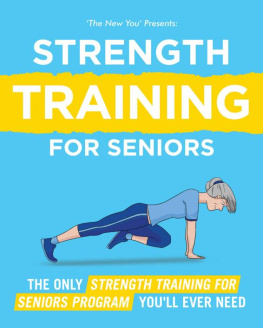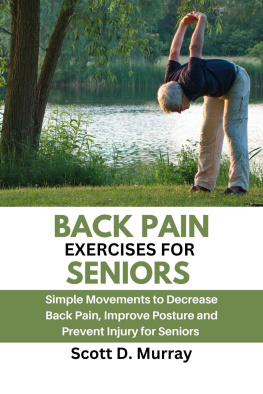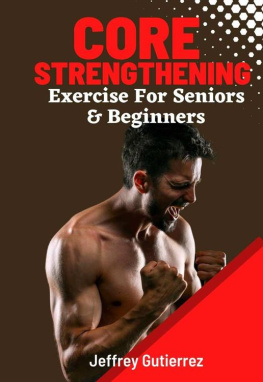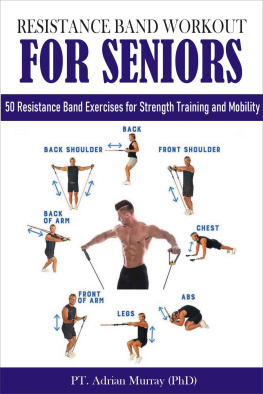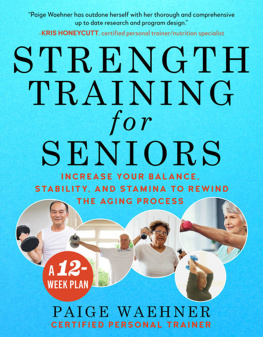Core Training for Seniors
A Complete Guide to Improving Core Strength and Mobility
Nick Cooke
Copyright 2022 - All rights reserved.
The content contained within this book may not be reproduced, duplicated or transmitted without direct written permission from the author or the publisher.
Under no circumstances will any blame or legal responsibility be held against the publisher, or author, for any damages, reparation, or monetary loss due to the information contained within this book, either directly or indirectly.
Legal Notice:
This book is copyright protected. It is only for personal use. You cannot amend, distribute, sell, use, quote or paraphrase any part, or the content within this book, without the consent of the author or publisher.
Disclaimer Notice:
Please note the information contained within this document is for educational and entertainment purposes only. All effort has been executed to present accurate, up to date, reliable, complete information. No warranties of any kind are declared or implied. Readers acknowledge that the author is not engaged in the rendering of legal, financial, medical or professional advice. The content within this book has been derived from various sources. Please consult a licensed professional before attempting any techniques outlined in this book.
By reading this document, the reader agrees that under no circumstances is the author responsible for any losses, direct or indirect, that are incurred as a result of the use of the information contained within this document, including, but not limited to, errors, omissions, or inaccuracies.
Table of Contents
Acknowledgements
I acknowledge and thank my mother Fiona Cooke for giving me the inspiration to publish this book and help those with less mobility.
Whilst writing this book Carey Madisons vast experience and high standard of editing has given this book the flow it needs.
Furthermore, my close friend Ben Tepper did me the favor of photoshopping all of the images in the warm up, seated core, standing core and cooling down chapters. Without him, the whole process wouldve take a lot longer.
Id also like to credit Elli Renarde, who completed the core muscle map illustration to give you a visual perspective of the numerous muscles that make up the core.
Introduction
All our life we are told that a major part of being healthy is to engage in proper exercise. This is entirely true; however, during my years of working as a fitness instructor and a level three personal trainer, I could not help but to notice that many of the exercise routines and information that is available to the public through mainstream options only target young and able-bodied people. I specialize in assisting unpaid caregivers and the charges that they take care of by introducing them to gentle exercises that they are able to do at home, and which complement their movement capabilities. My mother has a physical disability that limits her movement, so this issue is close to my heart. My hopes are that, through this book, I will be able to reach more people that have a need to access exercise information in this regard.
Through my work, I have noticed that many of my elderly clients, clients that lead sedentary lifestyles, and those that have suffered injuries, such as back injuries, that restrict them to only gentle exercises share the same problems. One of the main issues is back pain when doing normal day-to-day activities, such as cleaning their homes, working in the garden, and working at their normal professions, or even when they are just in bed at night.
These issues normally occur due to their core muscles being underdeveloped, and this can easily be remedied and improved with a few easy exercises that can be done at home and which do not require too much movement or tricky positions that may be difficult to get out of, such as laying or sitting on the floor.
This book will give you the guidelines and tools necessary to gain strength and mobility; you will find everyday tasks to be less strenuous and even easier to accomplish. This will make you feel young again which naturally comes with a confidence boost! The goal here is to help you feel good and make a positive change in your body without it feeling like a chore or exhausting you.
Chapter 1: The Core Principles
Before we can look at how to exercise your core, we need to understand it better. Once we understand the benefits we can reap from maintaining our core properly, and the problems that can arise if it is not properly exercised, once we understand this we will feel motivated enough to exercise this very important part of our body. Oftentimes, when someone hears the word core, they immediately think of a six-pack and well-defined abs, and they are correct to a certain extent. I will be showing you that the core is much more than that.
What Is the Core?
Your core is the middle area of your body, better known as your midsection. It includes your stomach, your back, and your sides. It stretches from your diaphragm to your pelvic floor muscles. The main function of your core muscles is to take the weight and pressure off your spine and to help regulate force between your upper and lower body. Your core muscles assist you in doing a wide variety of actions such as, sitting down, standing up, and using everyday tools such as a vacuum cleaner, broom, and rake. It even includes just standing upright in general, such as when you are cooking a meal or paying for your groceries at the supermarket.
What Muscles Make up the Core?
In this section, we will be looking at all of the major core muscles and where they are located in your body, as well as what their functions are in your normal day to day life. The scientific names may seem intimidating at first, but dont let them discourage you. I will explain them to you in depth so that by the time you are through with this section it will not seem so scientific and complex at all.
Major Core Muscles
Pelvic Floor Muscles
These are the muscles and connective tissue that can be found around your pelvis area. These muscles offer support for the organs that are housed in the pelvic area, such as your bladder, liver, kidneys, and intestines; in females this will include the uterus as well. When these muscles are properly exercised regularly it can benefit those that experience a condition known as stress urinary incontinence. The pelvic floor muscles are superior to your glutes, but inferior to the rest of your core muscles.
Transverse Abdominal Muscle (TVA)
These muscles can be found layered deep inside the front and sides of the abdominal wall. They are most notably the inferior muscles to your diaphragm, and superior to the pelvic floor muscles. These are the muscles that are actually responsible for a flat stomach. But more importantly, they help to compress the ribs and organs in your upper body and provide stability to your pelvic and thoracic areas. These are also the muscles that pregnant women will use while giving birth. Exercising these muscles can reduce as much as 40% of the pressure that is found on the intervertebral discs of your spine, where a lack of exercise can lead to spinal injury.
Multifidus
This is a collection of muscle fibers that can be found connected on either side of your spine, and travel from just below where your skull and neck meet and all the way down to where your spine and pelvis meet. The function of this muscle group is to give stability to your spine, making the vertebra more effective. When this muscle group is not exercised properly and regularly it can lead to lower back pain.

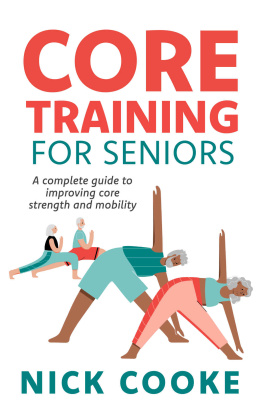




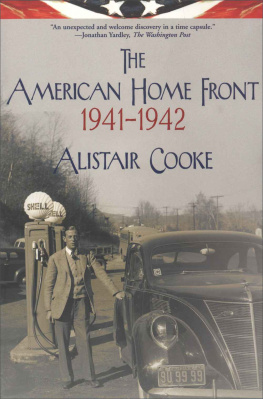

![Dorian Ritter (2023) - The Strength Training Workouts Bible for Seniors 60+: [7 in 1] The Most Complete Guide of 200+ Simple Exercises that Elderly of Any Level Can Do Step by Step at Home](/uploads/posts/book/451362/thumbs/dorian-ritter-2023-the-strength-training.jpg)
